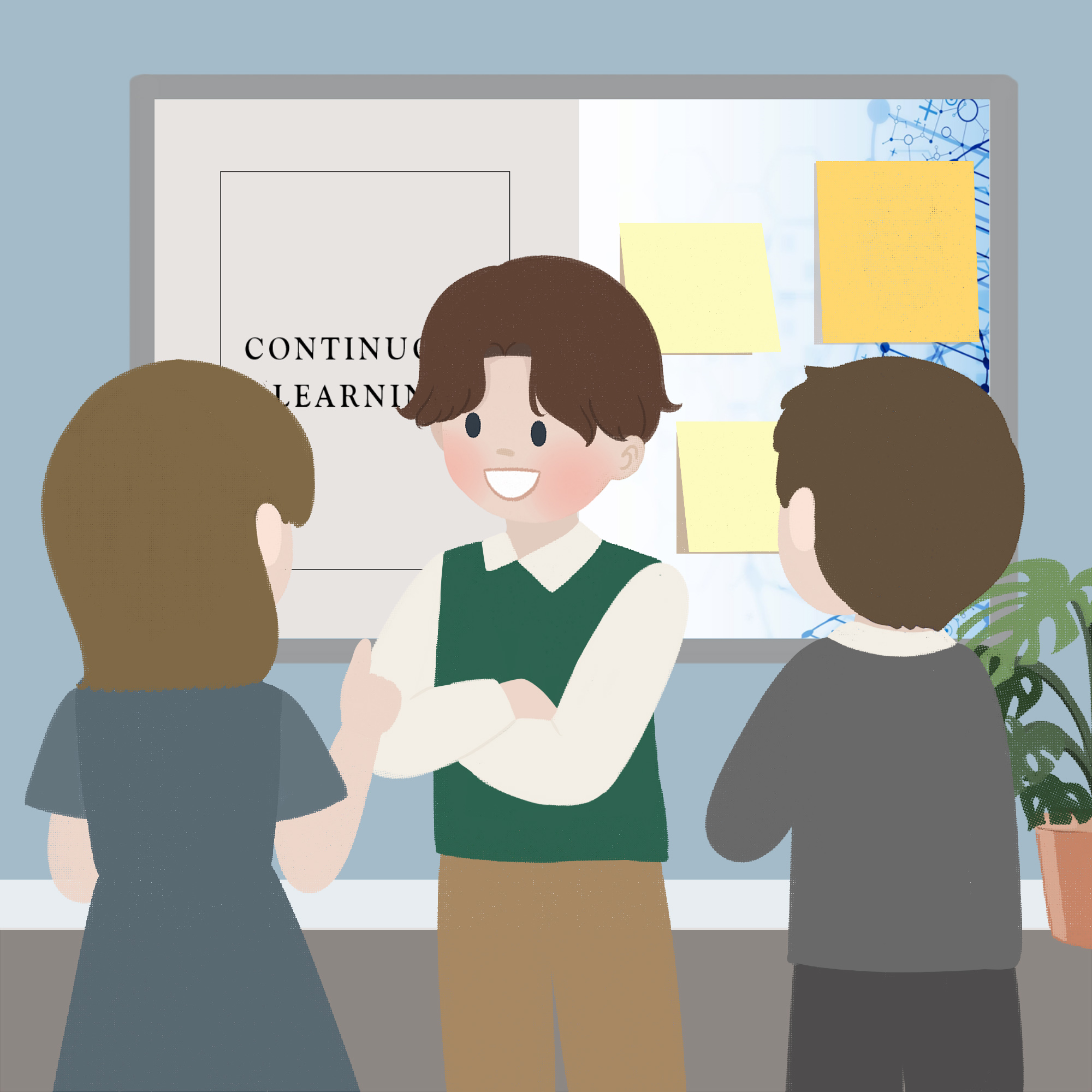Lesson observations can be nerve-wracking and stressful for many teachers. Often, this is a result of not-knowing how to effectively deal with the observation (or anticipation of it) on an emotional, professional and strategic level. Today, I’ve invited Rose-Anne Turner, Admissions Director at Destination TEFL, to share her advice on how to ace a TEFL lesson-observation.
Images for this guest blog post have been kindly provided by Destination TEFL and show teachers they have successful trained in-action, interacting with students. If you’re thinking of getting a TEFL qualification and teaching overseas, then Destination TEFL can help you!
There are so many things to think about when you’re being observed, that it’s easy to forget the obvious. Here are some ways to make sure you ace your observed lessons.
Before the lesson
This applies to observed practicums during your course: Pay attention in class! Know the correct procedures and techniques, so you know what is expected of you.
PRACTICE, PRACTICE, PRACTICE! Practice the steps and procedures (drilling, back-chaining etc) and practice your full lesson beforehand, on your own or with your partner. Get your classmates to act as students and let them point out any mistakes afterwards – all in good faith of course, and you do the same for them. Ask for a copy of the observation form that your observer will use and understand what they’re looking for. Your trainer should make it clear what is expected of you.
This will also apply should you be doing a demo lesson for a job interview. When you are called in for a demo, be sure to get all the facts beforehand, including the number and level of the students, how long the lesson will be, the topic, the facilities on site, etc.
Have a backup for everything! Always have a spare board-marker – they have a nasty way of suddenly dying when you least need them to. Time wasted scrambling for another pen will affect your lesson time management, and the curveball will make you nervous, as well as having a knock-on effect. If you plan to show images on a projector, print the images too. If you’re giving students handouts, always have a few spares on hand in case your observer wants a copy or in case there are more students than expected. Have a safety net for every aspect of the class. Be prepared to upscale or ‘dumb-down’ the lesson in case the level of the students is not what you were expecting, so make sure activities can be adjusted accordingly.
Have a checklist. Having an amazing board game or a fun worksheet is pointless if you leave it behind – we’ve seen this happen too many times – you can only be marked on what you actually do in class, not what you left at home. Attached to your lesson plan, have a checklist of what to bring, including a bottle of water and a sweat towel – there’s nothing worse than dripping sweat over the kids (yes, we’ve seen this happen too!). Make sure you have all your materials required for the lesson.
Dress professionally. If you look the part, you’ll feel the part and then you’ll act the part. If you’re not confident, fake it! Soon it will be real confidence. Find out beforehand what the dress code is at the school where you’ll be conducting the lessons. If this is for your teacher practicums during the course, you will be told this beforehand, but if it’s for a demo lesson find out! Some schools for instance, insist that female teachers wear skirts, not trousers, and many schools want all tattoos covered up.
Don’t rush and don’t leave things to the last minute! Do all your printing the day before – power outages happen and that could mean you can’t print your worksheets, lesson plan etc. make sure your computer is charged and is working. Don’t assume there will be WiFi if you need to show a YouTube clip – either download the video or make sure you can send a hotspot from your phone to the computer for internet access. On the day devote all your attention to delivering a great class, not worrying about last minute logistics.
During the lesson
Stay calm. It’s natural to be nervous when being observed. Many people speak too quickly when nervous – take a deep breath and SLOW DOWN, or your students will not understand you. Smile at your students. They will smile back and this will help you to relax.
Take note of your students. Plans should be followed… however, they should also be adapted if need be, according to your students’ levels. This is why it’s important to plan for your lesson to be adjusted both up and down, particularly for a class you have never taught before, and are not familiar with the level. Involve all your students When nervous, it’s natural to just focus on the students in the front, or those who are actively participating. Try your best to encourage all to participate.
Step back and read what you have written on the board. Often our brains are thinking ahead and we make silly spelling or other mistakes on the board. Take a step back and read what you have written.
After the lesson
Listen to the feedback, and take it to heart. Getting constructive feedback is the best opportunity for you to develop as a teacher. Sometimes, it’s not easy to hear, but the feedback given during your observed lessons on the course, is done so with the best intentions, allowing you to get the most out of the course. Avoid acting defensively, arguing with the observer and blaming the students. Instead, keep an open mind, ask for more details and note down the suggestions.
Do a self-analysis. After each lesson, think back to what you did, and how you could have done it differently. Think about how you handled questions, unruly kids, etc and think about how you could improve. Keep a lesson journal, and take your own feedback to heart too.
Take responsibility. Think about what you could have done to teach a better class, not about how someone else is at fault for what went wrong in your lesson. Many people get defensive when given feedback. Blame it on naughty kids? Rather take responsibility for poor classroom management, and research classroom management techniques. Not enough time? Look at your time management skills, and how much wasted time there was in the class.
It’s important to act on the feedback given after a lesson. If you don’t incorporate the suggestions given by your observer in your next lesson, then the feedback was pointless. Make the most of the valuable feedback session given during your course. After a demo lesson for a job interview, ask for feedback too. Your potential employer will value the fact that you are keen to improve and every good teacher knows that the best teachers never stop learning.
Rose-Anne Turner, Admissions Director – Destination TEFL (www.destinationtefl.com)
Thoughts and reflections from Richard James Rogers
I really enjoyed reading this great blog post, Rose-Anne. Thank you for taking the time to share these great tips with our community. As a high-school Science teacher in Thailand, I found these tips to be just as helpful to me as they would be for a TEFL ‘purist’. I think your advice is beneficial for teachers in a wide-variety of different settings.
My key-takeaways were as follows:
- A lesson-observation needs to be dealt with strategically: this is not something that you can leave to chance, or be ad-hoc about. You need to have a plan in-place for the run-up to the lesson, the lesson itself and the after-lesson reflection process. Most teachers focus only on lesson-planning and their presence during the lesson, in my personal experience.
- Planning the lesson activities and meeting lesson-objectives is important, but dealing with your own emotions and mental well-being as the teacher is equally important. This aspect of preparing for a lesson-observation is often overlooked and poorly discussed in traditional teacher-training programmes, in my personal opinion.
- I really liked the after-lesson tips: teachers need to hear no-nonsense advice like “Listen to the feedback, and take it to heart”. I really like how you encourage teachers to “take responsibility”: we live in a world of convenience coupled with flux, and this often causes adults to become resentful and play the ‘blame game’ when receiving constructive criticism. It’s important to detach any negative emotions from whatever feedback you receive, analyse what happened, and take the necessary action steps to become better next time.
















































